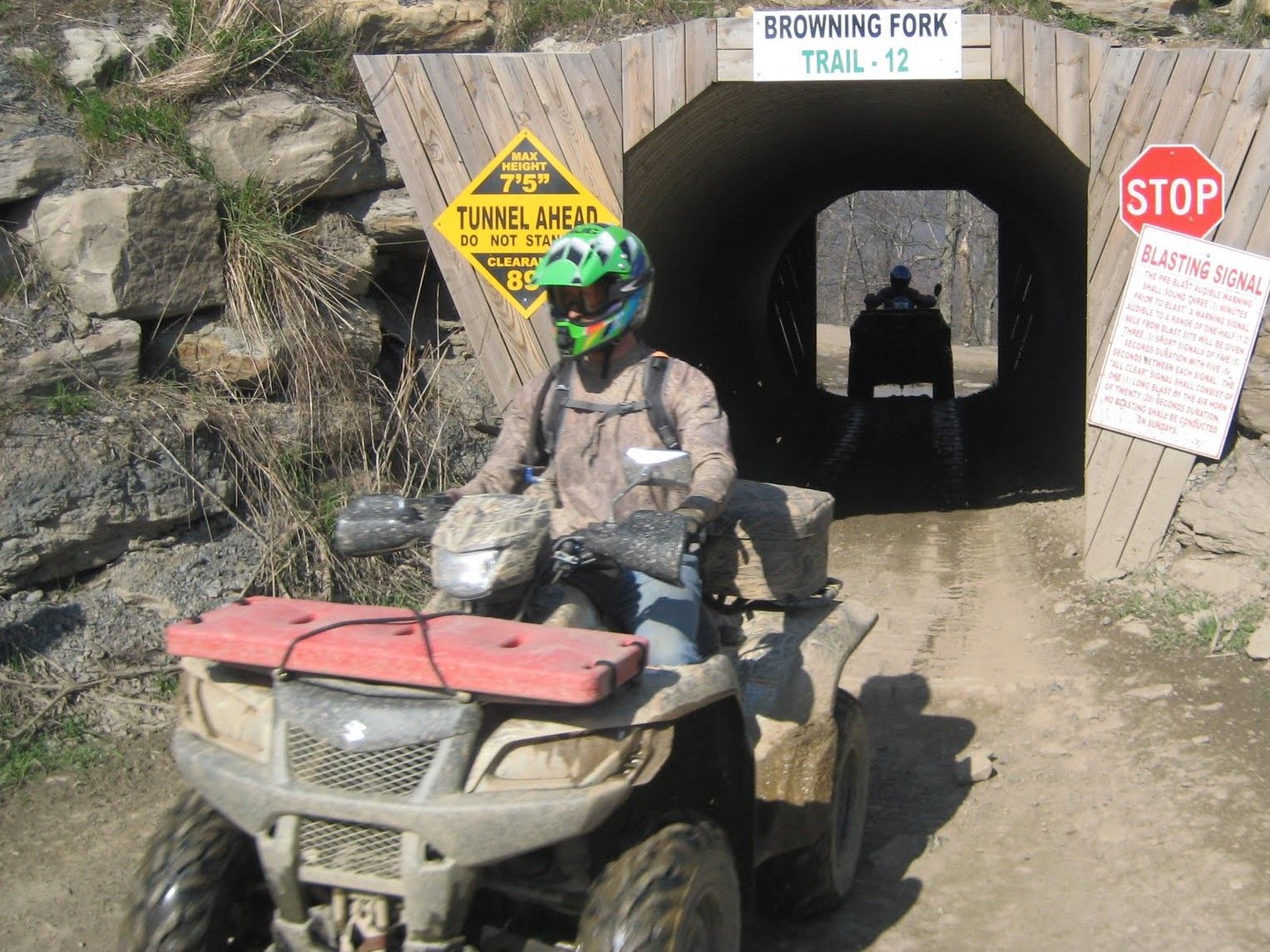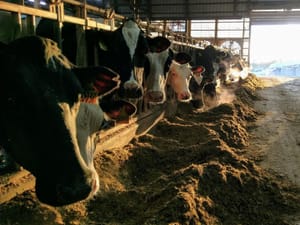SUMMERSET, S.D. – The number of all-terrain vehicles registered for road use in South Dakota has risen dramatically in recent years, even as a growing body of research shows that ATVs are more dangerous and deadly on roadways than in off-road areas.
ATVs certified as legal to drive on South Dakota roads more than doubled in the past decade, from 17,913 registered in 2009 to 38,377 registered in 2018. That 114 percent increase compares to a 17 percent increase in the overall number of cars, trucks and other vehicles registered during that time span, according to the state Department of Revenue.
A national study of fatal ATV crashes over a 25-year period by the journal Injury Prevention showed that more than 60 percent of deaths occurred during on-road use, even though ATVs are driven far more frequently in off-road settings.
A separate study by the journal Traffic Injury Prevention showed that over the past 20 years, ATV-related deaths increased at twice the rate on paved roadways compared to off-road surfaces.
Manufacturers of ATVs tell dealers and buyers that the machines are not designed for on-road use, and many contain warning tags recommending off-road use only. A major non-profit ATV industry group, the Specialty Vehicle Institute of America, also opposes on-road use of ATVs.
Yet South Dakota laws treat ATVs much the same as motorcycles when it comes to licensing and riding legally.
ATVs are a general category of off-road vehicles that includes single-rider machines with handlebars and a straddle seat and Utility Terrain Vehicles (UTVs), which are two-person, bucket-seat models also called side-by-sides. Larger, multi-passenger Recreational Off-road Vehicles (ROVs) are a recent entry into the market.
All are legal to ride on roads and highways in South Dakota except for interstates. The vehicles must be licensed by the state and have basic safety components such as a horn, rear-view mirror, headlights and brake lights before becoming road legal. South Dakota is one of 36 states that allow on-road ATV use in some form, and its laws are among the least restrictive in the nation.
Experts point to the basic design of ATVs, which are made to traverse trails or bumpy terrain and make tight turns around objects, as one reason they are more dangerous on paved or unpaved roads. Also, experts say small, low-pressure tires, a high center of gravity and speeds that can now reach up to 80 mph make ATVs prone to rollovers. ATVs also can collide with much larger, heavier cars and trucks when used on roads.
“It’s a vehicle not designed for roadways,” said Dr. Charles Jennissen, a pediatric emergency physician at the University of Iowa Hospital who studies ATV accidents. “You have basically a vehicle that when it is on the roadway, it is being misused. If you’re traveling on a roadway, it’s never going to be safe when used that way.”
Recent research also shows ATV drivers tend to employ riskier behaviors when traveling on roadways, such as not wearing a helmet, being under the influence of alcohol, riding too fast for conditions or carrying passengers unsafely.
ATVs have become extremely popular, with sales tripling between 1995 and 2005; about 45,000 are now sold in the U.S. each year. Riders say they enjoy ATVs for the freedom of the open air, ability to traverse a variety of surfaces and to travel to places passenger vehicles cannot.
Like any mode of transportation, ATV use includes some inherent risk.
Since 1982, about 15,250 people have died in ATV-related accidents in the United States and more than 100,000 people have been injured (those figures do not include data on ROVs.)
South Dakota, the 46th most populous state, was 38th in ATV-related deaths from 1982-2013 with 86 fatalities, according to the U.S. Consumer Product Safety Commission. Over the past five years, the state has seen 14 fatalities in ATV or UTV accidents, several of them on roadways, according to the state Department of Public Safety.
The incongruity between state law and manufacturer recommendations puts powersports dealers in a tough spot. Representatives of three South Dakota dealerships interviewed by News Watch had strong feelings on ATV use and safety, but all three declined to have their names or the names of their dealerships published.
One veteran South Dakota law enforcement officer said drivers should apply the same caution and common sense to ATV use that they would with any motor vehicle.
South Dakota Highway Patrol Capt. Jason Husby, who trains other officers on motor vehicle laws, said people who ride ATVs on the road must be aware of the limitations of the vehicles and the risks they face when riding.
“It’s not as safe as a passenger car, and you don’t get the maneuverability of a motorcycle,” said Husby, who drives cars, motorcycles and ATVs. “But a lot of this really comes down to the fact that it’s not what you drive, it’s how you drive it.”

Freedom and accessibility
Scott Wittrock of Hartford loves to ride ATVs because they provide him and his sons the freedom to explore places that are inaccessible to cars or trucks.
Whether on organized group trail rides or while hunting in the Black Hills, driving ATVs is both fun and practical for Wittrock.
“For me, I like being able to get back in nature a little bit, and I love coming out in the Black Hills and getting to places other people can’t get to,” he said.
Wittrock serves as president of the South Dakota ATV/UTV Association, which monitors legislation related to ATVs and lobbies for trail construction and access statewide. Wittrock said his group supports legal on-road use of ATVs. He said users sometimes need to travel on a road to get from one trail to another, and that South Dakota residents east of the Missouri River may ride on roads because the region has almost no trails to legally ride upon. Farmers and ranchers also need to drive ATVs on roads for work, he said.
Wittrock said he and his two sons wear protective gear and helmets when riding (helmet use is required by law for minors on roadways but not during off-road use). Both of his sons have had ATV accidents, including one in which his son rolled his machine and was fortunate to avoid serious injury by wearing a helmet.
“I’d be lying if I said I wasn’t shaken up,” Wittrock said.
Wittrock said ATVs can be made safer for on-road use by installing tires appropriate for hard surfaces. Manufacturers have also steadily added safety mechanisms, including roll cages, body harnesses, differentials that aid in turns and steering mechanisms that reduce rollovers.
Wittrock said he knows some people ride ATVs regularly on roadways, especially in smaller towns and rural areas, and he said most veteran riders are aware of the dangers and act accordingly.
“As people who have been in ATVing and offroading for a long time, we generally know there are risks associated with our hobbies and we’re willing to take some of those risks,” he said.

Studies reveal on-road dangers
A growing body of scientific research supports the idea that ATV use on roadways – either paved or unpaved – is more dangerous than riding off-road.
A comprehensive study of ATV accident data published in 2016 showed that ATV use is especially dangerous on paved roadways. The study published in the science journal Traffic Injury Prevention reviewed ATV crash data from 1982 to 2012 sowed that deaths occurred at twice the rate on paved versus unpaved roads.
The study highlighted other dangers of using ATVs on paved roads, including that victims suffering injuries or death were more likely to be male adolescents, and that alcohol use was higher and helmet use lower in accidents on paved roads.
“Although differences were observed between paved and unpaved roads, our results show that riding on either represented significantly greater dangers than riding off the road,” the study concluded. “These data further support laws or ordinances greatly restricting ATV riding on all types of public roadways.”
Children remain at high risk of ATV accidents resulting in injuries and death, according to a study published in August 2017 by the research journal Pediatrics. That review examined four years of ATV crash data involving children in Pennsylvania and concluded that youths under 18 were injured in ATV wrecks while driving, as a passenger and while being towed. The study of accidents from 2004 to 2014 showed a slight decrease in youth injuries in ATV accidents during that time frame, which was attributed to the Great Recession of 2008 that reduced disposable income and the ability of families to buy as many recreational vehicles.
The study data showed that helmet use reduced fatalities, that stricter state regulations on youth use of ATVs improved safety, and it supported other studies indicating that riding on paved or unpaved roads was more dangerous than riding off-road.
“It has been concluded that being a passenger or using an ATV on paved roads, especially among adolescents, increases the mortality rate,” the study authors said. Additionally, “Helmet use was associated with a reduction in the number of deaths, whereas riding on a street or roadway was associated with more deaths.”
A 2014 study published in the Journal of Safety Research examined fatal ATV wrecks from 2007-2011 that occurred solely on public roadways.
Of the 1,701 deaths examined, the vast majority of victims were the driver of the ATV and the accidents did not involve another vehicle. Nine in 10 of those who died were male, but females made up a majority of passengers who died. Accidents were more common in rural areas and high speed was a factor in nearly half the fatal wrecks.
A position paper from the Specialty Vehicle Institute of America, which represents ATV manufacturers and distributors, states that all-terrain vehicles of any type do not comply with the extensive safety standards and testing required by the U.S. Department of Transportation for other on-road vehicles. “If ATVs could be kept off of public roads … a large percentage of ATV-related injuries and deaths would be prevented,” the institute said.
On-road ATV registrations rising fast
Here is a look at the number of all-terrain vehicles registered for on-road use in South Dakota compared to registration of all on-road vehicles over the past decade.
Year ATVs registered Total vehicles registered
2009 17,913 1,184,344
2012 24,213 1,248,890
2015 30,375 1,336,814
2018 38,377 1,387,196
Source: South Dakota Department of Revenue
South Dakota has seen a number of ATV-related fatalities during use on paved and unpaved roads in recent years.
In July 2012, a 12-year-old boy died after his ATV rolled on him while driving home from school on a gravel road near Claremont.
Prominent golfer and businessman Mark Amundson died after crashing an ATV on a private road in Sully County in August 2014. In November 2017, a 65-year-old recently retired state worker from Pierre died when he lost control of his ATV on a city street after being chased by a dog. That same month, 59-year-old Regional Health executive Larry Veitz died after losing control of his ATV on a forest service road near Spearfish.
State Rep. Jim Schaefer and a woman both died when struck by a truck while riding in a UTV on a highway near Kennebec in May 2018. A month later, an 81-year-old man driving an ATV died after turning in front of a truck trying to pass him on state Highway 47 north of Gregory.
Officials with the Lawrence County Sheriff’s Office are hoping that increased patrols this summer might prevent accidents like those or other dangerous behaviors among ATV users.
For the first time, the agency in the northern Black Hills will conduct concentrated patrols this summer specifically aimed at monitoring safety of ATV users, said Capt. Patrick Johnson.
“This is the first year because we’ve had such an influx of ATVs and UTVs,” Johnson said. “We’re going to try to be more active in and around the forest this year because we don’t see an end to it.”
Johnson said officers will work overtime shifts to monitor ATV use and try to protect riders and those around them. Officers will be on watch for intoxication or drug use as well as speeding, which Johnson said is the most dangerous behavior among on-road users.
“There’s only so fast you can get going on some of these trails, but on our county roads and highways, the speeds are much higher,” Johnson said. “When the speeds are higher, the chance of an accident is much higher.”

Designed for off-road use only
Jennissen, the pediatric doctor at the University of Iowa, first took an interest in ATV safety as a youth when a cousin and family friend were killed after turning their ATV in front of a truck on a highway in Minnesota.
Jennissen said he is not against ATVs in general, and in fact has ridden the machines most of his life and still owns a Polaris side-by-side. He regularly teaches ATV safety classes for youths and adults.
Yet Jennissen often sees the disastrous results of ATV crashes in the emergency room, and says many of those wrecks are from on-road use.
His personal experiences, knowledge of ATV manufacturer guidelines and review of recent data and scientific studies have left him adamantly opposed to laws that allow the use of ATVs on paved or unpaved roadways.
Jennissen said more states, counties and municipalities are opening public roads to ATV use due to pressure from ATV riders and organizations that may not realize the heightened dangers of on-road use.
“We don’t always legislate for safety or with safety in mind,” Jennissen said. “We’ve been trying to fight the trend of on-road use, trying to develop more and more data to show why this is a real problem, not a ‘made up problem,’ but it seems like it continues to gain more steam across the country.”
Jennissen said he commonly sees injuries and sometimes fatalities that result from vehicle rollovers.
ATV rollovers that whip riders out of the vehicle or result in the machine lying atop riders can lead to limb amputations, crushed body cavities or suffocation if riders cannot lift the machine off themselves.
Several designs elements that benefit off-road users make the ATVs far more dangerous when used on roadways, said Jennissen, reached at an FFA conference in Iowa where he was training youths on safe ATV use and injury prevention on farms.
A narrow track, high center of gravity and significant clearance above the travel surface promote rollovers, Jennissen said. Another major factor in rollover wrecks is the knobby, low-pressure tires standard on ATVs that grip tightly on hard surfaces.
The higher top speeds and heavier weights of modern ATVs also heighten the potential for major injuries, he said.
“When they roll over, there’s a lot more force generated from this bigger, faster machine,” Jennissen said. “If it rolls over on you and no one is around, you can’t get it off you and suffocation and death can result.”
ATV riders sometimes have an overconfidence that comes from a sense of stability and safety that don’t exist, especially on paved and unpaved roads, according to Bill Uhl, an expert who testifies in trials and who has trained military special forces offices on ATV use.
Uhl said ATV manufacturers warn against on-road use but don’t tell consumers enough about the reasons why ATVs can be dangerous. For example, ATVs have handlebars or steering wheels that can turn the wheels at a sharper angle than cars and trucks, and many ATV users aren’t aware of the rollover risks that result, Uhl said.
Uhl said small tires can be especially dangerous if tire pressure falls even slightly or when used on hard surfaces that grip more than off-road terrain.
Uhl also said some built-in safety features are not as effective as manufacturers claim.
“It’s the illusion of stability, and in the UTVs, it’s the illusion of safety
with the roll cage and harness,” Uhl said. “You think you’re protected, and it’s that illusion of protection that gets them into trouble because ultimately they’re not protected.”
Uhl also said ATVs are less safe than motorcycles because ATV drivers may be less aware of dangers and undertake riskier behaviors, such as not wearing a helmet or using alcohol, elements noted in several ATV accident studies.
“You’re vulnerable on a motorcycle, absolutely, but you have a different caliber of person riding a motorcycle because they know they’re not stable and they know they can be dangerous,” Uhl said. “You get a different person who drives an ATV, often very unskilled people.”
8 “Golden Rules” of ATV safety
These are safety suggestions for ATV use provided by the Vehicle Safety Institute within the Specialty Vehicle Institute of America, a non-profit trade organization:
- Always wear a DOT-compliant helmet, goggles, long sleeves, long pants, over-the-ankle boots, and gloves.
- Never ride on paved roads except to cross when done safely and permitted by law; ATVs are designed to be operated off-highway.
- Never ride under the influence of alcohol or drugs.
- Never carry a passenger on a single-rider ATV, and no more than one passenger on an ATV specifically designed for two people.
- Ride an ATV that’s right for your age.
- Supervise riders younger than 16; ATVs are not toys.
- Ride only on designated trails and at a safe speed.
- Take a hands-on ATV RiderCourse and the free online E-Course.
For more information, visit ATVsafety.org or call 1-800-887-2887.





